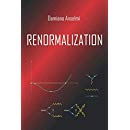Archive for March 1999
The trace anomaly in external gravity is the sum of three terms at criticality: the square of the Weyl tensor, the Euler density and $\Box R$, with coefficients, properly normalized, called $c$, $a$ and $a’$, the latter being ambiguously defined by an additive constant. Considerations about unitarity and positivity properties of the induced actions allow us to show that the total RG flows of $a$ and $a’$ are equal and therefore the $a’$-ambiguity can be consistently removed through the identification $a’=a$. The picture that emerges clarifies several long-standing issues. The interplay between unitarity and renormalization implies that the flux of the renormalization group is irreversible. A monotonically decreasing $a$-function interpolating between the appropriate values is naturally provided by $a’$. The total $a$-flow is expressed non-perturbatively as the invariant (i.e. scheme-independent) area of the graph of the beta function between the fixed points. We test this prediction to the fourth loop order in perturbation theory, in QCD with $N_f \lesssim 11/2 N_c$ and in supersymmetric QCD. There is agreement also in the absence of an interacting fixed point (QED and $\phi^4$-theory). Arguments for the positivity of $a$ are also discussed.
Annals Phys. 276 (1999) 361-390 | DOI: 10.1006/aphy.1999.5949

 Quantum Gravity
Quantum Gravity 


